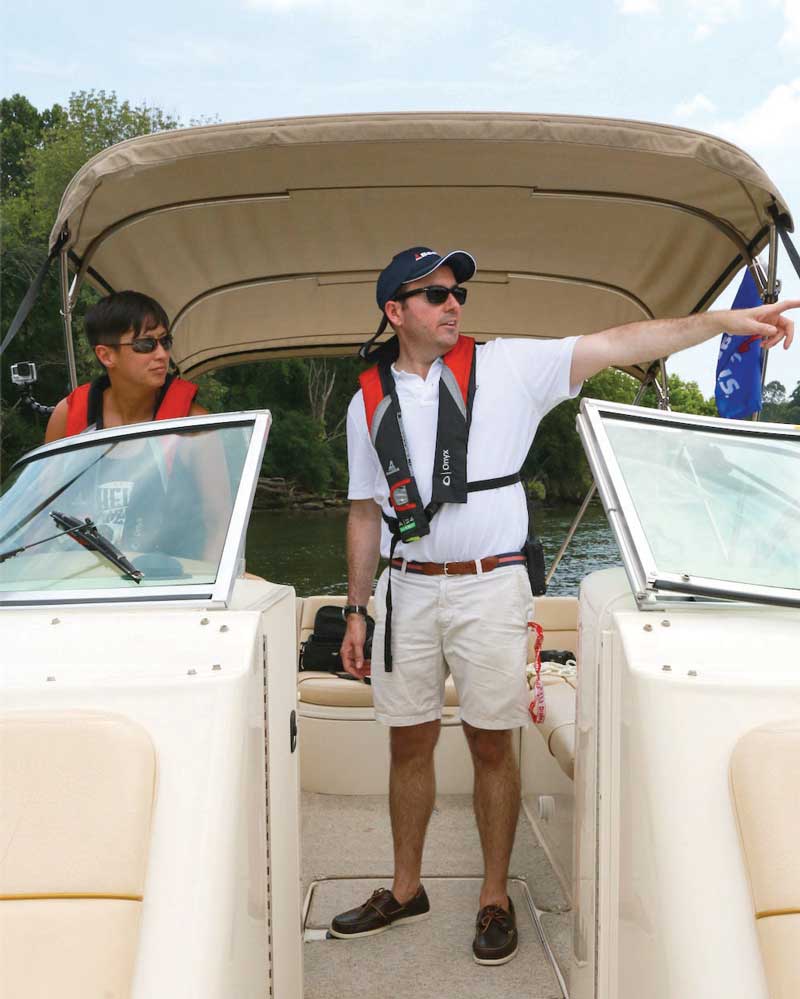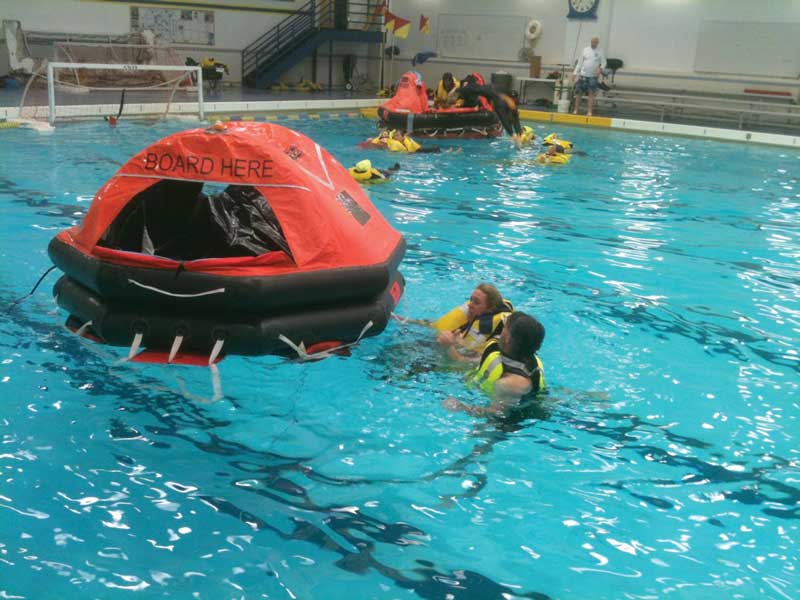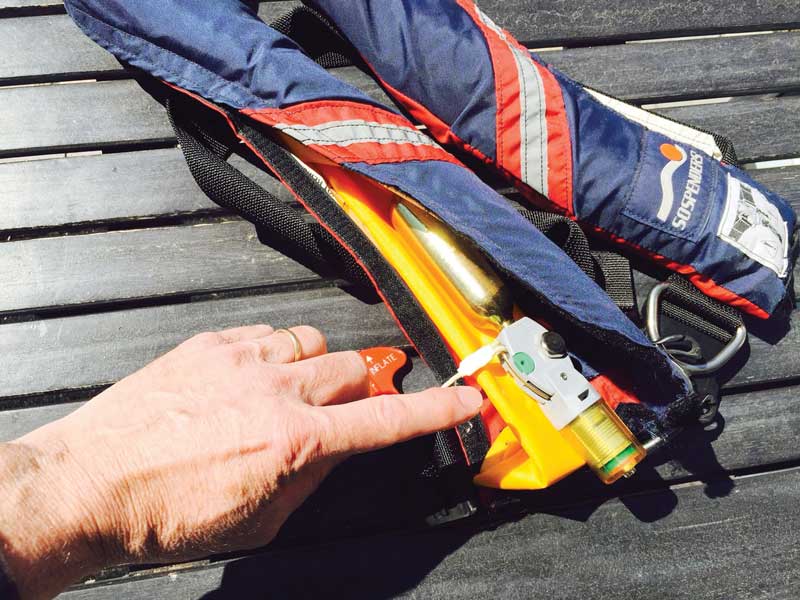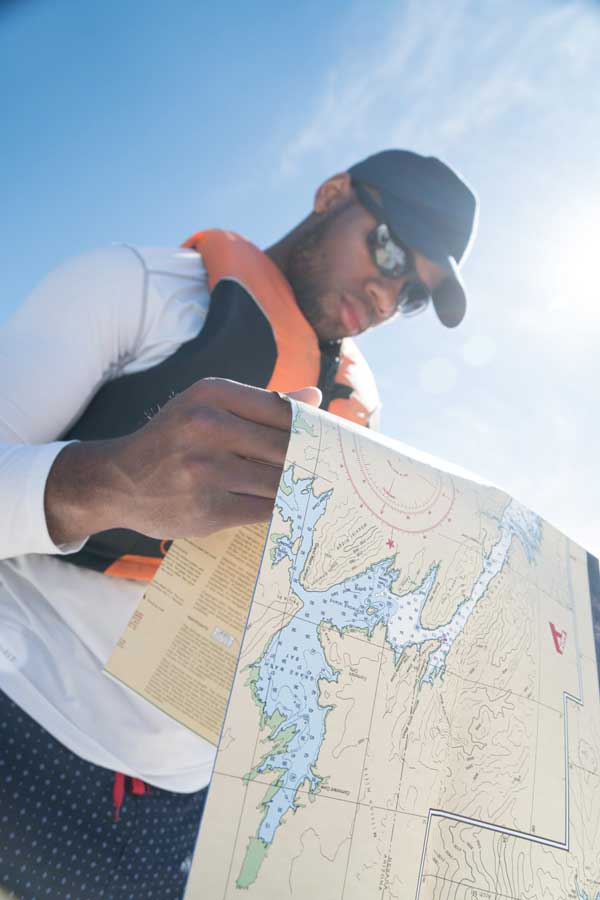Emergencies while underway are often the result of a “perfect storm”—a series of unexpected events and small issues that combine to create larger problems. Critical split-second decisions are forced upon skipper and crew. As safe boaters, we like to imagine we’re prepared if we have acquired the right gear, but the truth is, no matter how much safety gear you have aboard your boat, if it’s not in proper operating order and the crew doesn’t know where to find it and how to use it, things can go quickly from bad to worse.

Fortunately, a variety of resources exist to prepare boaters, their crews, families, and other passengers for the unexpected challenges that may arise. From attending medical and safety seminars to conducting on-water safety drills, time spent on crew safety training will be time well spent.
The ‘Aha’ Moments
In the sailing world, U.S. Sailing’s Safety at Sea seminar is widely recognized as the most thorough safety course offered for skippers and crew. Each Safety at Sea seminar includes lectures, written materials, and hands-on training in a controlled environment. Heavy weather, man overboard procedures, and communication are just three of the many topics covered. For those who can’t make it to a seminar in-person, the course is also offered online.
Many of the most impactful safety lessons taught by Safety at Sea presenters could also apply to powerboaters. For example, even seasoned sailors often experience difficulty when attempting to follow seemingly simple safety procedures that they’ve read about in books. Sometimes they turn out to be not-so-simple in real life.
“I think the most common ‘aha’ moment is when participants find out how tricky it can be to board a life raft from the water with full gear on,” observes Chuck Hawley, who is one of the most experienced Safety at Sea moderators and a nationally recognized speaker and expert on marine safety. “The added bulk of foul weather gear, plus a life jacket, plus water-soaked clothing, makes it very difficult to pull oneself into a raft.

“The second, far less common ‘aha’ moment is when someone’s life jacket doesn’t inflate after immersion,” says Hawley.
“Thankfully, this doesn’t happen often, but even though a person in foul weather gear and clothing is surprisingly buoyant due to trapped air, at least for a while, it’s disconcerting to not have one’s lifejacket inflate. This reinforces one of the key messages of hands-on training: it’s vital to a) maintain one’s life jacket and b) to understand the alternative means of inflating the device.
“A third takeaway, which is related to the second, is the importance of maintaining all of your safety gear. In the 25-plus years that I have been participating in Safety at Sea courses at the Naval Academy, I’ve run into a variety of gear failures. I’ve had throw ropes that have been tangled, life rafts that have deployed incorrectly, lights that haven’t lit, and so forth. This reinforces the need to take responsibility for your own gear and not to blame or rely on someone else (except in the case of the life raft, where a factory authorized service center is your best bet).”
Build some muscle memory
If you’re planning to take an extended voyage, once your crew becomes comfortable executing safety maneuvers in calm conditions, consider practicing in more challenging conditions, such as choppy seas, and perhaps even in the dark. It’s one thing to do a man overboard (MOB) drill on a warm, calm day. It’s another thing entirely to try and retrieve a 150-pound object during a dark night while being pelted with rain.

Is the captain of your boat the keeper of all the safety information? They shouldn’t be. Could your crew quickly find the medical kit or the fire extinguisher? What if you’d lost power and it was dark? How often does anyone besides the captain use the radio or SAT phone? Who aboard would know how to communicate your location? Who knows where the emergency signaling devices are stored and how to use them?
No one wants to think about it, but what would happen if your skipper became incapacitated? It would be nice if several crew could divide up the emergency duties and boat operation, but for many cruisers, the “crew” is only one person—a spouse. For this person, the U.S. Power Squadrons offer a popular course known as “Suddenly in Command,” to prepare a first mate with the basic skills needed to bring an unexpected situation under control.
Everyday Safety
Most of us will never encounter an extreme safety emergency, but even everyday life aboard can present its own smaller challenges. Prior to an extended trip, it’s a good idea to give family, friends, or other passengers some opportunities to become accustomed to living aboard.
The more experience your crew has moving around while underway, the easier it will become. Get a little practice working in the galley while underway. Practice with the gimballed stove and pot restraints, and find the safest way to use a knife (perhaps seated). As the galley is one of the most likely places for fire, keep a fire extinguisher nearby.
In the galley and throughout the cabin, with time, the crew will come to know instinctively where to reach for handholds, and if they practice their watch system, they’ll become accustomed to sleeping in a berth and functioning on short periods of sleep. Likewise, with time, personal hygiene can become easier, faster, and less messy.
Safety briefings
Once you’ve done your safety education and drills, there might be a temptation to think your family or crew is good to go, but the importance of routine safety briefings shouldn’t be overlooked. Keeping pre-depature briefings to-the-point will increase the likelihood that the crew’s attention is dialed into what you’re saying.

Your briefing might include a reminder of the location and use of the most important safety equipment, the location of through-hulls and how to plug them, the location of the first aid kit(s), and any other information you think bears repeating. In addition to the “what and where” this is a good time to stress the importance of teamwork and the necessity of staying calm. Your foundation of preparedness will enable them to think and act quickly and with efficiency.
By Beth Crabtree